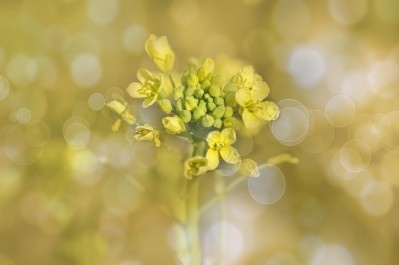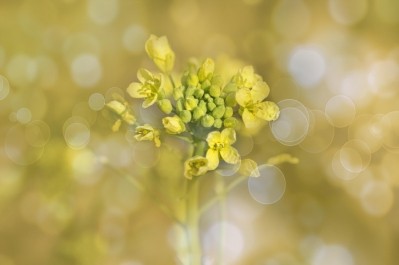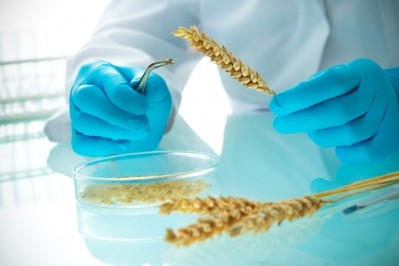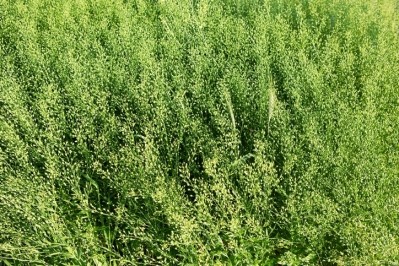Special Edition: Aqua feed advances
Using GM plants as a source of omega-3 fish oils and astaxanthin for feed is sustainable, says UK professor
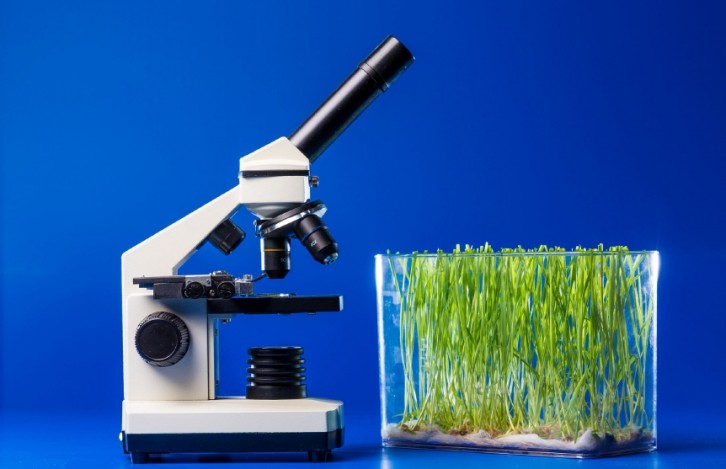
Hertfordshire based, Rothamsted Research, which receives funding from the UK’s Biotechnology and Biological Sciences Research Council (BBSRC), was recently granted permission by the UK’s Department for Environment, Food and Rural Affairs (Defra) to carry out the trial on its test farm this year and into 2017.
But trial opponents, such as UK campaign group, GM Freeze, said the environmental credentials of generating the omega-3 long chain polyunsaturated fatty acids (LC-PUFAs) - eicosapentaenoic acid (EPA) and docosahexaenoic acid (DHA) - from GM Camelina plants as opposed to sourcing them from marine resources “do not stand up to scrutiny” given that such plants would be growing on prime agricultural land.
However, Professor Johnathan Napier, lead scientist of the project at Rothamsted Research, told FeedNavigator the amount of land that would be required to produce a significant volume of omega-3 fish oil replacements via GM plants is, actually, quite minimal.
“Camelina yields about 0.75 metric ton (MT) oil per hectare. Currently, the global annual harvest of fish oils from the ocean is approximately 1 million MT, with 80% - 800,000 MT - being used in aquaculture.
“So hypothetically if GM Camelina was used to replace a quarter - 250,000 MT - of that oceanic-sourced fish oil, it would require 333,000 hectares of the crop to produce the oil.
“Now, 333,000 hectares seems like a big number, but in the context of global agricultural oilseed production, it is a quite a modest one. For example, in Canada alone in 2015, the total area of land used to grow the oilseed canola was in excess of 8,000,000 hectares. So in comparison, 333,000 hectares would represent 4% of the current Canadian canola acreage.
“Thus, using a very small percentage of the already existing oilseed-growing land in just one country would be sufficient to make a significant contribution to the supply of omega-3 fish oils without overreliance on oceanic sources,” said Napier.
Evaluation of astaxanthin novel trait
The Rothamsted team previously ran field trials of Camelina plants that accumulate omega-3 long chain polyunsaturated fatty acids (LC-PUFAs) DHA and EPA in their seeds. They said they have now also developed plants that can also accumulate astaxanthin, a pigment and antioxidant commonly used as a feed additive in aquaculture.
The purpose of the new trial, said the team, is to evaluate the performance of the novel traits, combined and individually, in the field.
“We have shown that GM Camelina is an excellent plant in which to make omega-3 fish oils, and with our colleagues from the University of Lincoln, Nebraska, we wish to extend this to now include astaxanthin, to determine if it is possible to make the two most costly aqua feed ingredients in a plant seed,” said Napier.
Results from the institute’s 2014 GM Camelina, published last year, demonstrated how the team engineered Camelina sativa plants to produce non-native EPA and DHA, by introducing a set of seven synthetic genes based on the DNA sequences found in photosynthetic marine organisms.
Although previous experiments in glasshouses had given positive indications for the performance of this trait, the researchers said the 2014 trial demonstrated the stability of the trait and the ability of the GM Camelina plants to synthesize useful quantities of fish oils without any negative effects on yield.
And they said monitoring of the plants grown in the field showed no obvious phenotypic differences in the growth, flowering or seed-set of the GM Camelina plants when compared to the non-GM control plants.
In the 2016-17 trials, he said the scientists now want to pose some fundamental research questions regarding the feasibility of stacking the omega-3 EPA/DHA trait with astaxanthin, in terms of agronomic performance of the crop in the field, especially relating to seed yield and composition:
“For us, determining how these GM crops perform in the agricultural environment is the current challenge. So we will see if our metabolic engineering has any impact on the ability of the crop to withstand biotic and abiotic stresses. Based on previous trials, we would predict not, but it is important to investigate this for the new astaxanthin and omega-3 stack, since, in that particular case, our modifications to the seed composition are more complex.”
As with previous GM field trials, said Napier, the team aims to publish the results in a peer-reviewed, open access journal as soon as the trial is complete and the data fully analyzed. “We expect results from the 2015 trial to be submitted for publication later this year,” he added.
Opposition to the GM Camelina field trial
Defra received 15 objections to the GM Camelina omega-3 fish oils and astaxanthin trial, including one from GM Freeze and 19 other organisations representing farmers, scientists, campaigners and charities.
In their list of objections to the research, they alleged:
- There is a risk of outcrossing via seed and/or pollen dispersal and cross-hybridization.
- The applicant has not made available the detailed results of monitoring from the previous GM Camelina release mentioned above.
- The case that this trial must take place via a deliberate release to the environment rather than contained use has not been made convincingly.
- The molecular characterization of the inserted genetic cassettes involved in this trial is incomplete.
- Food, feed and environmental safety of the GM Camelina need to be considered due to the risk of pollen or seed escape, dispersal by wildlife, human error or accidental release.
- The applicant’s argument that this release is justified on sustainability grounds does not stand up to scrutiny. The need for the products that could eventually be produced as a result is based on spurious arguments.
The opponents also claimed the sustainability challenges of the aquaculture industry are many and varied, and, as such, are not limited to the supply of feed and fish oil but include nutrient discharges, spread of fish diseases and fish escapes.
“If the overall impacts of aquaculture are considered, including external environmental costs such as impacts on marine biodiversity, it is highly unlikely that aquaculture would be regarded as economically sustainable, with or without GM camelina,” noted the campaigners in the letter.
In terms of the process involved in getting approval, Rothamsted Research said it submitted an application to Defra for permission to carry out the field trial on 1 February 2016. Subsequently a risk assessment was undertaken by the independent Advisory Committee on Releases to the Environment (ACRE), and a 48-day public consultation was carried out by Defra.
ACRE said it was satisfied all scientific issues raised by the public with respect to this application have been addressed.
The Rothamsted scientists said, during the risk assessment period, they also answered questions directly from the public and special interest groups interested in the research project and the trial.
A lot of investigation is also underway in the area of fermentation of microalgae for DHA and EPA replacement.
Industry analysts say yields and productivity still need to be optimized and price per ton has a long way to go before microalgae could be placed on a competitive footing with fish oil but with an end to patent protection on the technologies involved, a lot more players have entered that market.
Commentators say that such investment in R&D should support commercial scale and cost effectiveness of the process.
